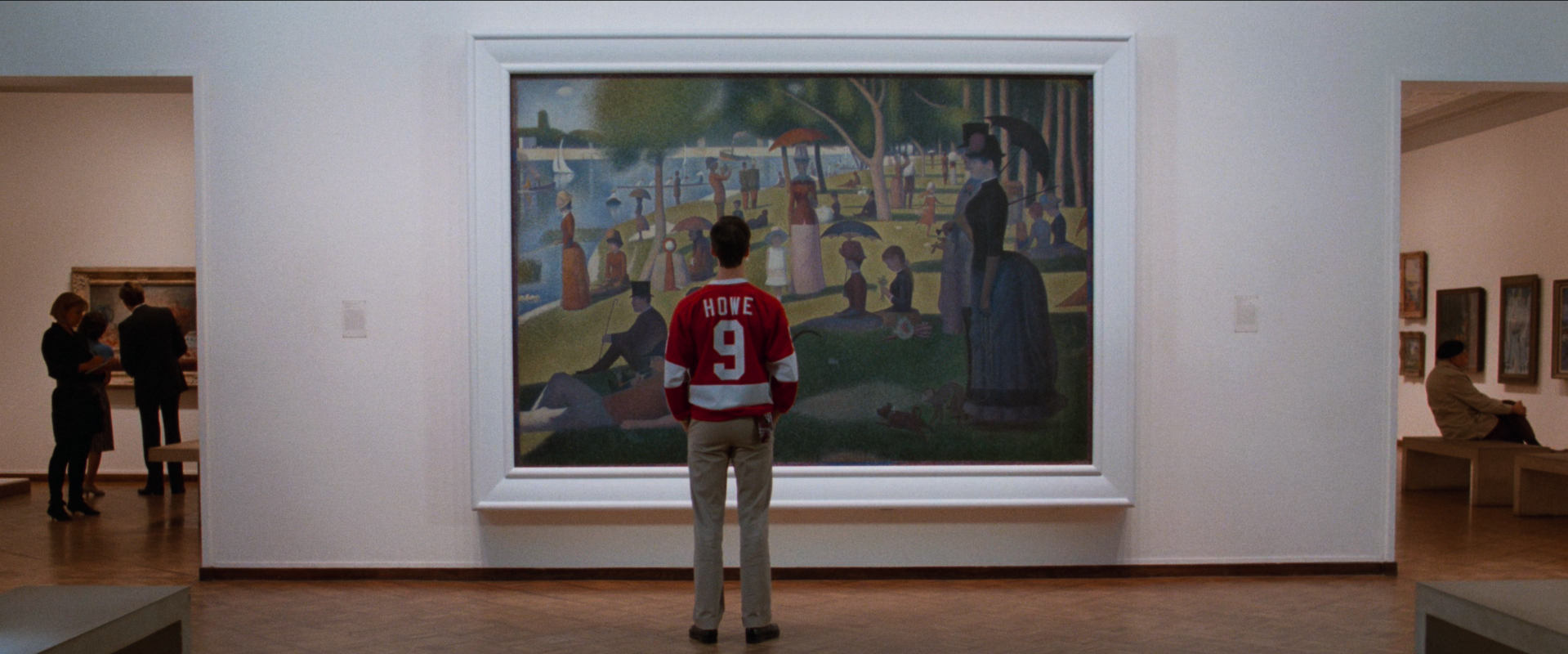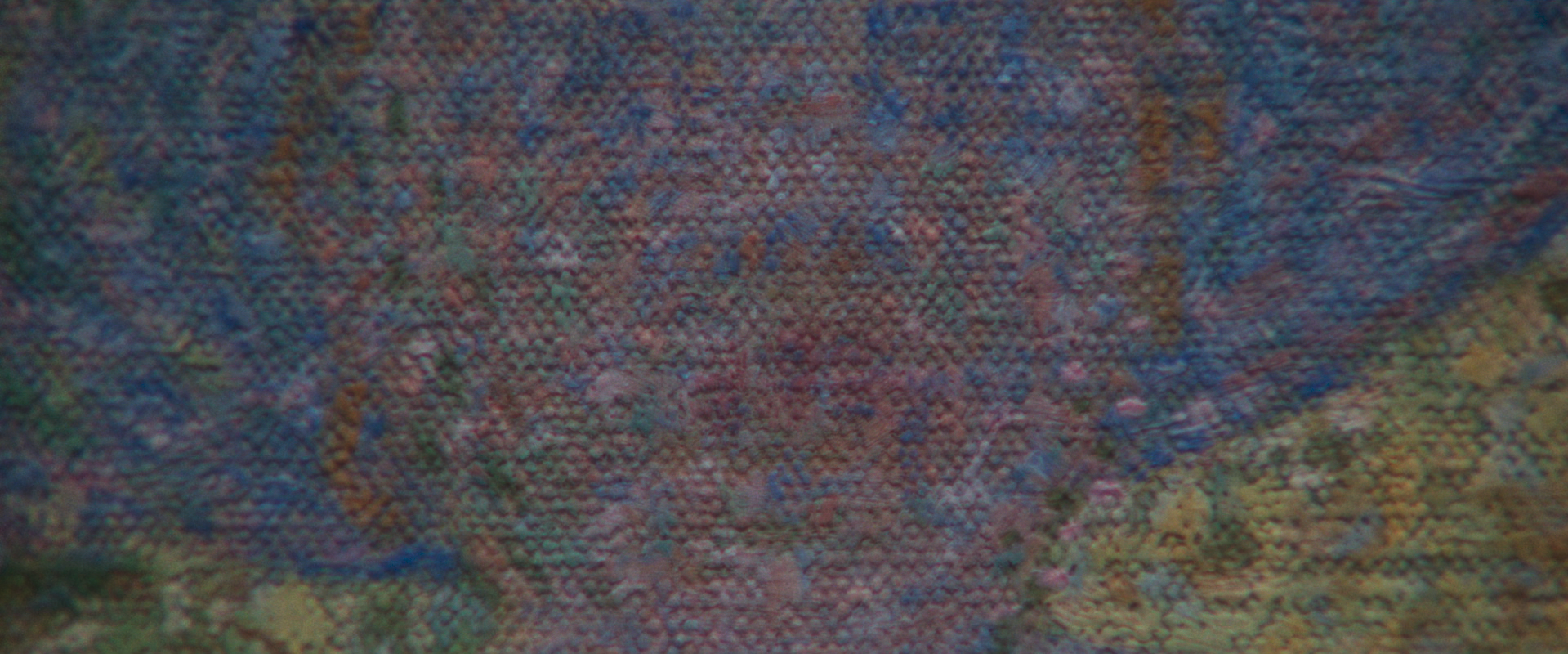/Analysis of Ferris Bueller's Museum Scene
Cameron Frye's Day Off
from 08/30/2024, by uni — 5m read
"Life moves pretty fast. If you don't stop and look around once in a while, you could miss it.” - Ferris Bueller

Ferris Bueller's Day Off masquerades as a lighthearted teen comedy, but beneath its sun-soaked Chicago adventure lies a nuanced exploration of youth, rebellion, and self-discovery. At the center of this whirlwind is Ferris Bueller, a charismatic high school senior whose carefree attitude and elaborate schemes to skip school serve as a catalyst for change. His presence sends ripples through the lives of those around him - his anxious best friend Cameron, his girlfriend Sloane, and his fiercely competitive sister Jeanie. As the day unfolds, each character is pushed to confront fundamental truths about themselves, revealing depths that might otherwise have remained hidden.
Among the film's many iconic moments, the scene at the Art Institute of Chicago stands out. It's a pause, a breath in the middle of all the chaos, sandwiched between high-energy escapades like singing on a parade float and sneaking into a fancy restaurant. Suddenly, the frenetic pace slows, the dialogue disappears, and the film becomes quiet, almost meditative. In this brief, two-minute interlude, we are invited to look deeper, to search for something more profound beneath the film's surface.
This museum scene is an unexpected oasis of introspection, a moment where the film shifts from lighthearted adventure to something more contemplative. It captures the fleeting nature of adolescence - the last days of carefree youth before the realities of adulthood begin to set in. The characters find themselves in a peculiar liminal space, still holding hands like children on a school trip, yet also standing among the solemn, thoughtful adults of the museum. They are caught between worlds, navigating the delicate transition from innocence to experience.
At the heart of this scene is Cameron's encounter with Georges Seurat's "A Sunday Afternoon on the Island of La Grande Jatte" (1886). He becomes fixated on the girl in the white dress, her form both present and disappearing into the tiny dots of Seurat's pointillist technique. The camera cuts between Cameron's face and the girl's face in the painting, moving closer with each cut until both are abstracted into nothingness. In this moment, Cameron confronts a terrifying possibility: that he, like the girl in the painting, is disappearing, dissolving into nothing more than a collection of meaningless points.

He closer he looks at the child, the less he sees with this style of painting. The more he looks at it, there's nothing there. He fears that the more you look at him, the less you see. There isn't anything there. That's him. - John Hughes
This realization is a turning point for Cameron. He begins to see himself as the girl in the painting - trapped not only by the frame that encloses her but also by the very medium that composes her. Just as she is confined within the borders of Seurat's canvas, her form dissolving into countless dots, Cameron feels confined by the structures that define his own life: his overbearing father, his role as the reluctant sidekick to Ferris, and his own paralyzing fear of making choices. Both Cameron and the girl seem caught in moments they cannot escape, their identities reduced to a series of dots on a canvas, forever fixed in place, unable to break free from the constraints that bind them.
While Ferris embodies the mantra "stop and look around once in a while, or you could miss it," Cameron is his foil - he fixates on details, becoming so lost in the subtleties that he fails to see the bigger picture. His obsession with the "dots" of his life - those minute, overwhelming details - prevents him from stepping back and seeing the broader canvas of his existence. Every moment is scrutinized, every decision second-guessed, and in doing so, he loses sight of the larger narrative of his life, much like the girl in the painting loses her form upon closer inspection.
Throughout the film, Cameron struggles with his identity, always seen in relation to Ferris. He lacks his own sense of self and quietly resents it. He's "Ferris's friend," the sidekick, the reluctant participant in Ferris's schemes. He goes along, but he's conflicted, yearning to break free from Ferris's shadow. His journey is one of awakening, of realizing that he has the power to change his path, to confront his fears, to stand up to his father, to define himself outside of Ferris's influence. But like the girl in the painting, he feels stuck, unsure how to move forward, trapped in a moment and frame he cannot escape.